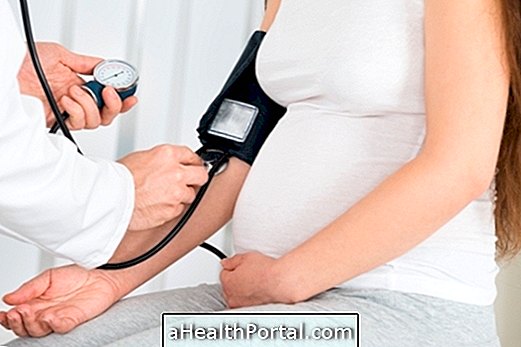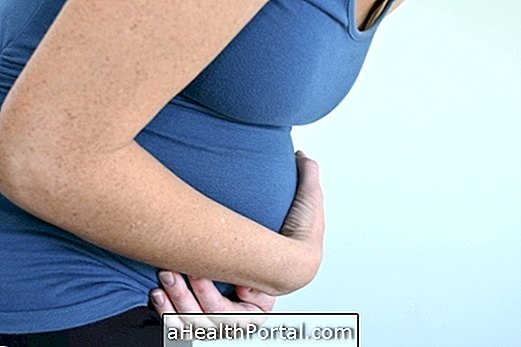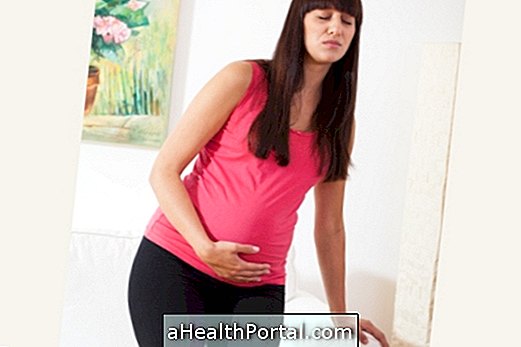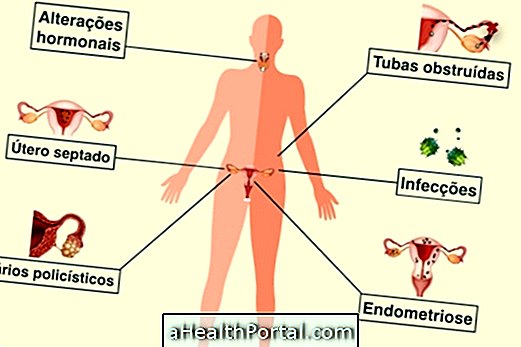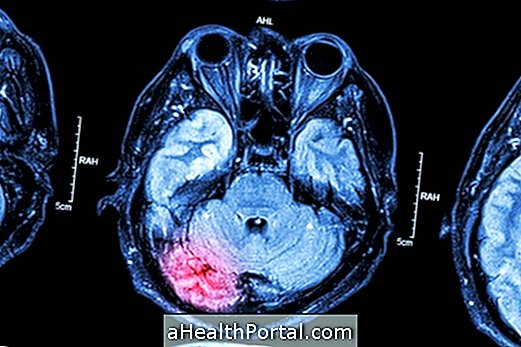The major signs of normal labor occur after 37 weeks of gestation and include uterine contractions that increase in intensity and frequency and the rupture of the "water pouch."
Signs of preterm labor, which can occur between 20 and 37 weeks of gestation, usually start with rhythmic and painful contractions and in this case the woman should inform her doctor and go to the hospital immediately.

Rhythmic uterine contractions are the most important sign that the work has actually begun, whereas rupture of the pouch, loss of mucus plug, and dilation of the cervix are signs that pregnancy is drawing to a close, indicating that the work of childbirth can begin within a few hours or a few days.
1. Strong colic - contractions
These contractions are rhythmic and arise accompanied by pain. Initially, they appear in spaced times and they diminish their interval with the passage of time, becoming more and more painful and intense. Learn how to identify contractions.
Some herbal remedies such as St. John's wort when taken under medical advice can help ease labor, see how to take Medicinal Herbs in St. John's wort.
2. Breaking the bag
The pregnant woman may notice that the pouch has ruptured when she goes to the bathroom and notices a discharge of a urine-like liquid, but it is lighter and cloudy, which may contain some whitish features that she can not control. See what to do when the bag bursts.
3. Loss of mucus plug
After going to the bathroom and cleaning herself, the pregnant woman may observe the presence of a brownish secretion with traces of blood that served to protect the cervix. Your loss may indicate that labor is starting right now, however it may still take a few days to happen; Learn more at: How to Identify Mucous Plugs.
In addition, another indicator that the baby will be born soon is the dilation of the cervix, which increases as labor progresses but can only be observed by the obstetrician or midwife through the "touch" examination.
In the case of first child, normal labor time ranges from 8 to 24 hours, but this time decreases with each pregnancy.
I'm in labor! And now?
When identifying who is in labor, one must take into account some factors like:
- If the cesária is marked:
When the pregnant woman wishes to have a cesarean, but has gone into labor before the expected date of the surgery, she should inform the doctor immediately while she is going to the hospital.
- If you want a normal birth:
When the pregnant woman wants a normal birth and finds that she went into labor, she should stay calm and watch the clock for how long the contractions come.
At the beginning of labor, the pregnant woman can continue to do her daily activities. Especially when it is the birth of the first child, because in this case the labor takes many hours. See What to Eat in Labor While You Wait for the Ideal Moment to Go to Maternity.
During labor, the pain should gradually increase, but the more relaxed and calm the woman is, the better the course of labor. There is no need to go to the hospital as soon as you feel the first contraction because labor occurs in 3 phases, which include dilation, which is the most time-consuming phase, which is the baby's birth and the exit phase of the placenta. Learn more about each phase in: Phases of Labor.
If the bag is still not broken, what can be done to relieve the pain of contractions is to take a warm bath, to enter a properly clean bathtub or a small pool because the hot water relaxes, favoring the dilation.
You should go to the hospital when the contractions get very strong and come every 5 minutes, however it is important to take into account the traffic and distance to the hospital, it may be necessary to prepare to leave while the contractions are every 15 minutes.

